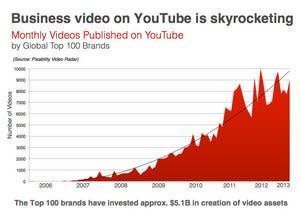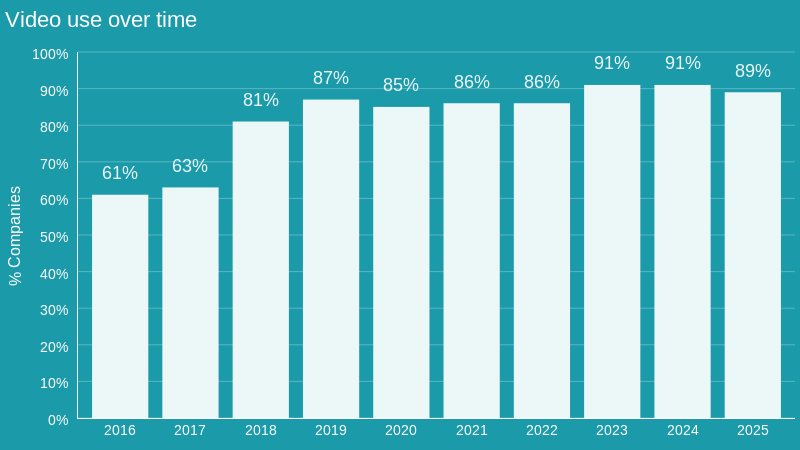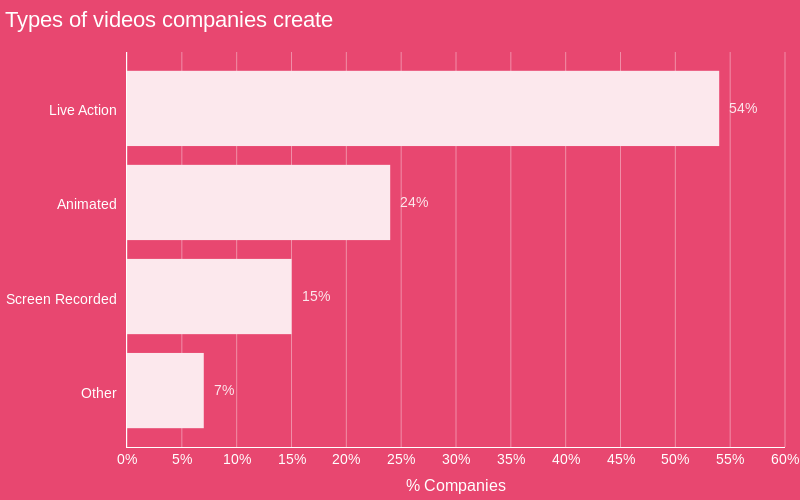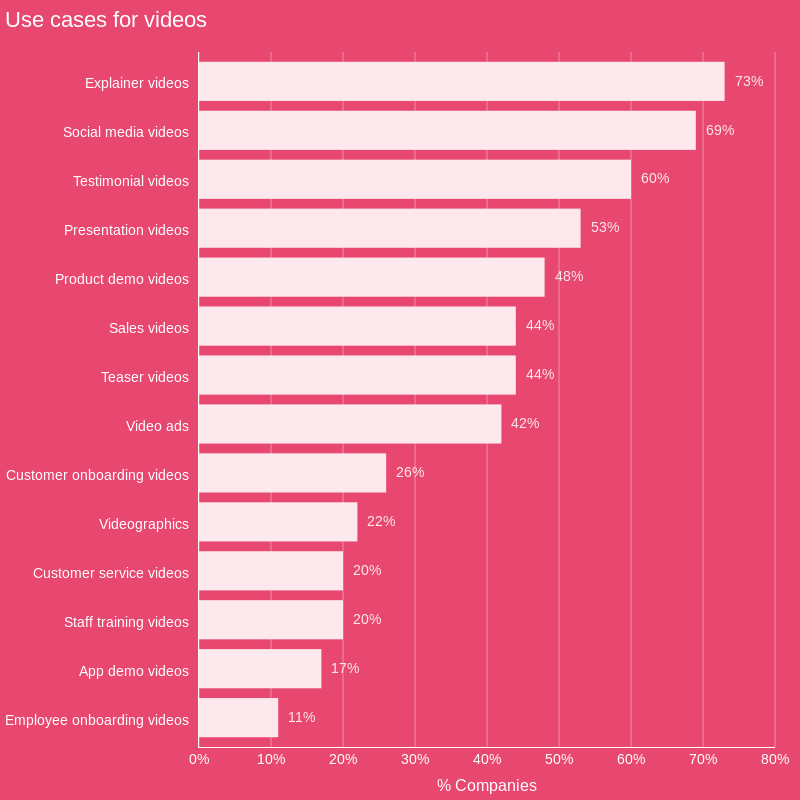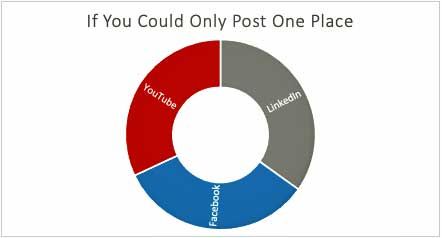How to make Stand-out Business Videos in Today’s Market
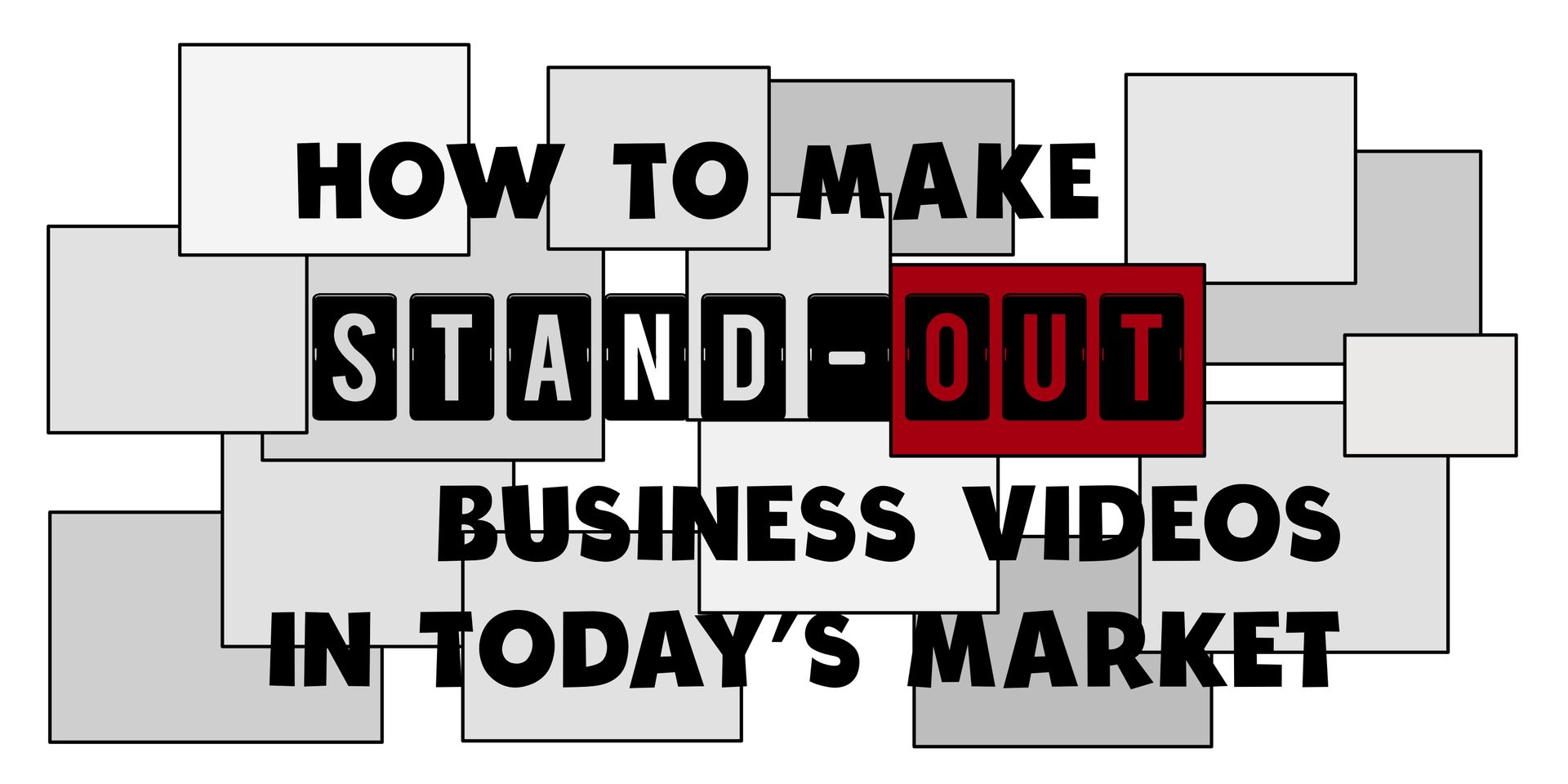
To anyone born after 2000, using videos as part of a business’ digital marketing strategy seems like a run-of-the mill tactic. Build a website, use social media and search engine marketing, create videos – obviously! But not many years ago, most small businesses could not afford or did not have the skills to produce videos for their brand. In this blog, we will discuss how the impact of business videos has changed over the last couple decades and how you can still use them to your advantage in today’s market.
Growth and Impact of Videos
In the year 2000, creating business videos was new and exciting. Only big industries with a matching marketing budget, forward-thinking and trendy companies, or cheesy local businesses really capitalized on incorporating video. Technology improved over the next couple decades, shifting business videos from “rare and impactful no matter the quality” to “commonplace and expected.” This snapshot of their growth on Youtube from a Yahoo!finance article displays the rapid growth in just a few years.
In these early days of video, it didn’t take much for a business video to speak loudly. The first videos to become effective or viral on Youtube seem like commonplace content today. In fact, if you are not using video somehow or somewhere, you are likely behind the curve in effectively communicating to clients or your employees. It isn’t just big brands producing high quality video content now that any small business has access to a decent video camera in smart phones and video editing software. AI usage opens another door of opportunity. We live in a world where it is expected for a company to use video somewhere, rather than the exception. Stats from Wyzeowl show just how commonplace video marketing continues to be, consistently hovering around the upper 80 percentages.
Types of Videos and Their Uses
Before we delve into how to make good videos, let’s cover what types are currently most used.
Wyzowl shows the three most common types of business videos are “Live Action,” “Animated,” and “Screen Recorded.” Live action videos are all over social media and have a relatively low entry bar. If you have something to say, you can set up your phone and record yourself sharing your talking points. Quality and effectiveness vary widely. Animated videos are harder to make and take someone with editing and/or animating skills. Screen recordings are very common for explainer videos and often used to educate employees. In fact, “Explainer” videos, which can be many different styles, are the top type of video at 73%. There are dozens of other types of business videos used internally or externally which could fall under these categories.
With 89% of businesses using video in 2025 (Wyzowl), can small businesses make videos stand out in today’s noisy markets? We believe you can if your content and quality remain exceptional!
Curating Valuable Content
If a person navigates to an explainer video on your website, they likely have a question or problem they need an answer to. This is an easy win for your company to have a 24/7 representative helping your customer. Videos aimed at creating brand awareness need to focus on capturing interest quickly and showcasing the viewer’s need for your service or product. Some video campaigns will require a lot of creativity to reach that goal (e.g. video ads), while others, such as staff training videos, communicate recurring messages. Quality content doesn’t have to be flashy, unique or mind-blowing, but it does need to be able to “be the solution” when your client comes looking or when you reveal the problem.
If you don’t know where to start on creating videos for your company, think about places of redundancy where a video can be used many times: onboarding videos, training videos, product demos, or even testimonials. Once you start looking at the needs of your company, ideas of where communication could be improved through video start to take off!
Creating Quality Videos
You don’t need to be able to win academy awards to make a great video that works well for your company. However, you do need to create something of good quality or you will be ignored, at best, or even do damage to your brand. To combat our generation’s short attention spans, it must be eye-catching. To be heard above the noise of the market, it must quickly tell the viewer why they need to give their time to watching and how they will benefit. If viewers are annoyed or bored, they will click away. So, good visuals, sound and lighting are just as important as the message.
If budget is your problem, DIY videos may work for you. Thankfully, Think With Google reveals viewers still believe that content “relating to their passions is 1.6% more important than whether content has high production quality.”

If your spokesperson has plenty of charisma and your message is clear, live videos on social media are easy to create. See our blogs on lighting and tips to creating your own videos. You can also use screen recordings as simple training videos for employees.
Think critically about the abilities of your team. Do you have the skills to communicate, plan, film, edit, and share a video? Do you have the time? Just as businesses contract out certain tasks if they can’t hire an in-house person, video production companies like Visual Legacy Productions can take on the heavy lifting to get the job done. In fact, about half of companies use in-house creators, while 45% hire out some or all of their video work to professionals (Wyzowl). At Visual Legacy Productions, we help experts in their fields communicate their stories effectively through video. Making a business video doesn’t have to be daunting, nor should it seem futile, trying to meet a marketing standard without garnering results. The right video in the right place can still give your company a voice so that you can be seen, heard, and understood.





